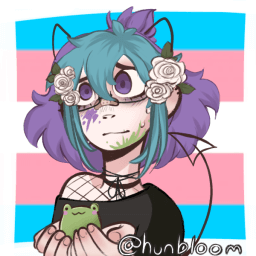What is a Sub System?
The word sub system can have several meanings when discussing DID/OSDD. When talking about a personality as a whole a sub system refers to emotional sub systems, or emotional action chains. This type of action chains is present in every person with a personality and is not exclusive to DID/OSDD. The second most common meaning is simply "an internal grouping of parts/alters." This meaning is exclusive to DID/OSDD Systems. This article will be covering on the latter.
Types of Sub Systems
DID/OSDD sub systems come in two major types with very distinct differences.
Groups of Alters
The most common type of sub system can be thought of as a grouping of alters or parts. This type of sub system can form for many, many different reasons. There can always be more reasons than we can provide, but a few common ones are:
- Sub Systems can form around particular "jobs" such as your day job, providing comfort/affection, planning, home life, self-care, child care, and more.
- Particularly stressful periods can cause sub systems to form around one alter splitting several parts, the new parts may then form a subsystem.
- Parts with similar trauma and system roles seem to often get put together into sub systems. Fictives into sub systems with fictives, robot alters into sub systems with robot alters, etc.
Communication and awareness between sub systems can vary heavily. Sometimes communication and sharing memories can be very easy between groups, seamless even! Other times, sub systems can have high memory barriers that result in full black-outs. Some sub systems may be able to have members con-conscious at the front. Others may actually repel members not in their sub system. In some cases sub systems may not even be aware the others exist at all! Often times communication between sub systems will start off low, getting better with work and therapy over time.
Just like with roles, names and other aspects of being a system, the parts do not choose the sub system they are in. It may be obvious at times why some parts are organizing the way they are, but other times it may seem completely random.
System-ception
A second type of sub system is an alter that has their own Alters. In this sub system all of the alters usually share the same, or a very similar name. Parts of such sub system usually share one internal body. This means other members of their system view those parts in the same way was external people view DID/OSDD people. Other system parts see one person/body with multiple parts switching.
Just like systems, this type of sub system can be extremely varied. The different parts may have different roles or ages. In our experience, memory barriers are very low between parts in this type of sub system. Parts may not even realize switches have occurred in real time or in memories, only being able to tell by behavioral changes. It is not uncommon for there to be adult and little parts in this kind of sub system all using the same name.
Sub-Sub Systems
You may be wondering if one sub system can occur inside the other. Put simply, yes, the first type of sub system can contain one or more of the second type of sub system. Likewise, some sub systems of the second type may become complex enough to organize into sub systems of the first as well.
Visual Examples with Patchwork
A lot of this terminology can get confusing; especially when we are saying one sub system can be inside another. To help we have made a small visual representation!

In the image above you can see several profile pictures of our various parts. These are not all of our parts, but ones that volunteered to be included for this example. We have marked on circle to the top of the image as "Front," to represent the area needed to interact with the outside world. At the bottom of the image an area is marked "Memories" to denote an area in which most parts can access shared memories.
Four (4) sub system areas are also displayed. Gold Sub Sys contains Gold, En/Greene as well as several other parts. Viv Sub Sys contains Viv, Elli, and a few other parts and littles. In the center, Daily Sub Sys which is where Katie and Aster are. Lastly there is an Asterisk Sub Sys inside of Daily Sub Sys.
Each of these sub systems provide different functions for us. Daily handles much of our day job while Gold Sub Sys often handles long term planning and Viv Sub Sys handles aggressive situations. Daily, Gold, and Viv Sub Sys are also all examples of the first type of sub system we talked about, groups of alters. Interally, En/Greene and Gold are two separate parts and view themselves as separate as you view yourself from others. The Asterisk Sub Sys is an example of the second type.
The Asterisk Sub Sys is both inside the Daily Sub Sys but also it's own fully compartmentalized sub system. The sub system contains all parts that identify and call themselves "Asterisk" or "Aster." Internally, all of the "Aster's" share one body.This is unlike Gold, En, Katie and other parts who have fully separate bodies with varying gender, hair color and length, etc. In stark contrast, the Asters have one body that looks similar to the physical body. This shared body works similarly to how DID/OSDD works to the outside world. One body with several parts inside.
Some sub systems of the second type may choose ways to identify each part. In the Asterisk Sub Sys's case, they have chosen to identify themselves by adding a prefix to their names for friends.



